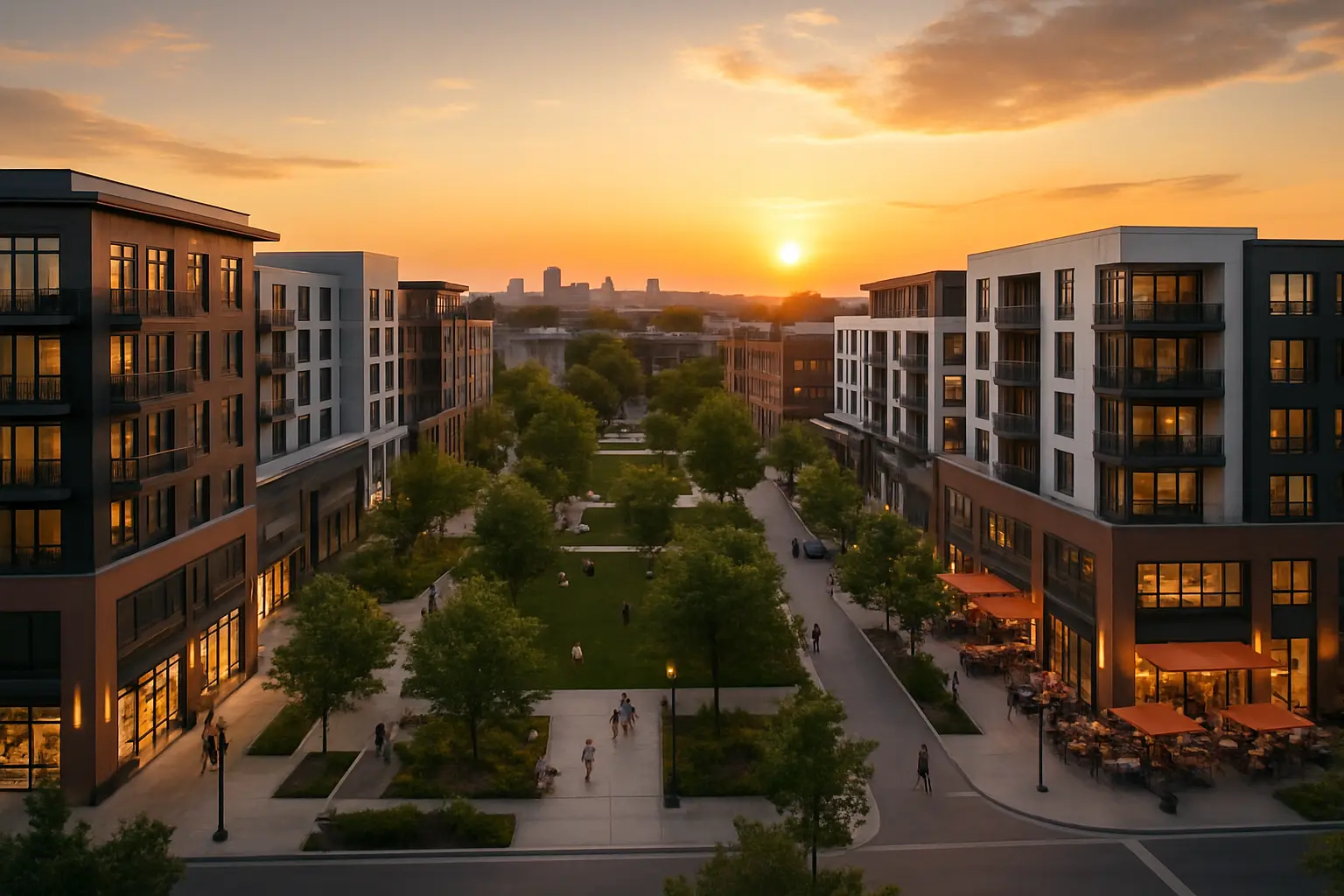The Metro Detroit Renaissance: A New Era of Mixed-Use Developments
How innovative urban planning is transforming Detroit's suburbs into vibrant live-work-play communities

The Evolution of Suburban Living
Metro Detroit's suburbs are experiencing an unprecedented transformation as communities embrace the concept of mixed-use developments. Birmingham, long known for its upscale atmosphere, has become a pioneer in this evolution, seamlessly blending luxury residential spaces with boutique retail experiences. Similarly, Royal Oak has reimagined its downtown core, creating vibrant spaces where young professionals can live above trendy restaurants and creative workspaces.
In Sterling Heights, the transformation of traditional strip malls into dynamic community hubs demonstrates how suburban areas can adapt to changing lifestyle preferences. These developments feature a thoughtful mix of apartments, retail spaces, and recreational areas, creating mini-urban centers that cater to modern living demands.
Smart Integration
Successful mixed-use projects in Southfield and Troy showcase the potential of intelligent urban planning. These developments have become case studies in effective integration, offering:
- Walkable neighborhoods connecting residential areas to retail spaces
- Green spaces that serve as community gathering points
- Flexible office spaces supporting the growing remote work trend
- Entertainment venues that create vibrant evening atmospheres
The City Center development in Troy exemplifies this approach, where carefully planned spaces encourage natural foot traffic between residential units and commercial areas, creating a self-sustaining community ecosystem.
Community Impact
In Grosse Pointe and Macomb, mixed-use developments have catalyzed significant community transformations. Property values in these areas have seen notable increases, with mixed-use zones reporting up to 15% higher valuations compared to traditional single-use developments.
"These developments have created natural gathering spaces where neighbors actually get to know each other. It's bringing back the community feel we once had, but in a modern context," shares a local community planner.
The impact extends beyond property values, fostering stronger community bonds through:
- Regular community events in shared spaces
- Increased foot traffic supporting local businesses
- Enhanced safety through natural surveillance
- Improved accessibility to daily necessities
Future Growth
The future of Metro Detroit's mixed-use landscape appears promising, with several exciting developments on the horizon. Emerging trends include:
- Integration of smart city technologies
- Sustainable building practices and green infrastructure
- Focus on health and wellness amenities
- Incorporation of cultural and artistic spaces
As these developments continue to evolve, they're setting new standards for suburban living while preserving the unique character of each community. The success of existing projects has sparked interest from developers and communities across the region, promising continued growth and innovation in mixed-use development throughout Metro Detroit.
The transformation of Metro Detroit's suburbs through mixed-use development represents more than just a trend—it's a fundamental shift in how we envision suburban living for the future.

